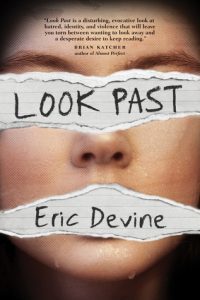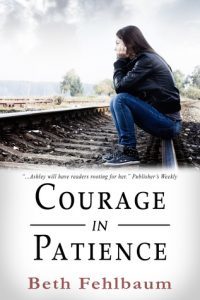Lea Wait's Blog, page 246
October 31, 2016
Sleep, Glorious Sleep!
Kaitlyn Dunnett/Kathy Lynn Emerson here, this time to share the joys of undergoing a sleep study in order to discover if I have sleep apnea or not.
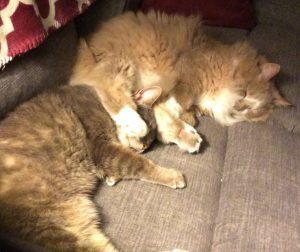
other members of the family never have any trouble sleeping
Back in April, my husband reported that I was showing classic symptoms of sleep apnea—I’d stop breathing while sleeping, then wake myself up with a start. Of course, I had no idea I was doing this, since I was asleep. I was skeptical to begin with, but a little research told me that sleep apnea could be a contributing cause of my high blood pressure, the panic attacks I occasionally have while at writers’ conferences, and a couple of relatively minor ailments I’ve suffered from, on and off, over the years. I suppose I never thought of sleep apnea before because I’ve always been a restless sleeper and I tend to make good use of that new upstairs bathroom we installed last summer. Quite often, I also get up for a half hour or so in the middle of the night and read until my restless leg syndrome calms down.
It took me some time to get an appointment with my primary care physician (she’s very popular and this wasn’t an emergency) and then there was another wait for an appointment at the Sleep Center at Franklin Memorial Hospital in Farmington, but eventually I was scheduled to report in at 7:30 on an early October evening and spend the night being monitored.
It will be an adventure, I told myself. I can use this in a blog, I said. Well, both predictions turned out to be true, but my biggest takeaway is the realization that very little in life is better than getting a good night’s sleep.
 The sleep study involved being monitored while I slept. I signed a paper giving permission for a camera to record my movements during the night. Then the polysomnographic technician attached wires to my head to record brain waves, which would tell her if I was asleep and how deeply. Another wire was attached to my finger to make sure I was getting enough oxygen. More wires made sure my heart was beating. All of these fed into a unit mounted on the wall. Fortunately, it could be detached and hung over my shoulder like a purse when I had to get up to use the bathroom.
The sleep study involved being monitored while I slept. I signed a paper giving permission for a camera to record my movements during the night. Then the polysomnographic technician attached wires to my head to record brain waves, which would tell her if I was asleep and how deeply. Another wire was attached to my finger to make sure I was getting enough oxygen. More wires made sure my heart was beating. All of these fed into a unit mounted on the wall. Fortunately, it could be detached and hung over my shoulder like a purse when I had to get up to use the bathroom.
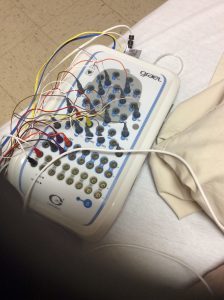 I was told that if I did show signs of having sleep apnea, I might be awakened and fitted with a CPAP (continuous positive airway pressure) mask, but that if those signs didn’t snow up until late in the study (after 3AM), I might have to come back for another session because there wouldn’t be time to tell if the treatment was working. With that information to mull over, I was left on my own while my technologist went off to set up the second patient she’d be monitoring overnight.
I was told that if I did show signs of having sleep apnea, I might be awakened and fitted with a CPAP (continuous positive airway pressure) mask, but that if those signs didn’t snow up until late in the study (after 3AM), I might have to come back for another session because there wouldn’t be time to tell if the treatment was working. With that information to mull over, I was left on my own while my technologist went off to set up the second patient she’d be monitoring overnight.
I passed the time reading (big surprise!) and since I usually go to bed between 10 and 11, I was already yawning when she came back to announce lights out at 10:30. To aid in sleeping, I’d brought my own pillow. The bed, although narrow, was comfortable, but I was trailing at least a dozen wires, which made turning over a little tricky.
I think you can guess what happened. Could I fall asleep? Of course not. Toss. Turn. Toss. Turn. Accidentally detach one of the heart-monitor wires and have to be hooked up again. Get up and pee. Repeat. Repeat. Repeat. At one point I asked if I’d slept at all. The answer was “a little.” I did eventually sleep, but I doubt I got more than an hour’s total and by then it was way too late to experiment with the CPAP. I don’t even know if I stopped breathing at any time during the session. By the time the technologist got me up at 5 AM to unhook everything and send me home, I wasn’t exactly at my best. I never thought to ask.
I went home and went back to bed. I didn’t sleep all that long, but I slept hard. It took me another week to get back to my normal restless sleep pattern—not great but at least familiar. Meanwhile, my hair was in terrible shape—lots of breaks and split ends—thanks to the gunk used to glue the wires in place on my head. Getting a comb through it brought back the not-so-good old days of teasing and hair spray. That, too, is finally back to normal, but somewhat the worse for wear.
So now it’s a little over three weeks later. I was hoping to be able to report on the results of my sleep study in this blog, but I haven’t heard anything yet. My husband, however, has reported more incidents of the stop-breathing thing.
Will I go return for another try if that’s what the report suggests? I’m not sure I will, although I’m game to experiment with the CPAP. To be honest, the best thing about the experience so far has been the response to posting about it on Facebook. Who knew so many people would kill for a good night’s sleep?
 Kathy Lynn Emerson/Kaitlyn Dunnett is the author of over fifty books written under several names. She won the Agatha Award for best mystery nonfiction of 2008 for How to Write Killer Historical Mysteries and was an Agatha Award finalist in 2015 in the best mystery short story category for “The Blessing Witch.” Currently she writes the contemporary Liss MacCrimmon Mysteries (Kilt at the Highland Games) as Kaitlyn and the historical Mistress Jaffrey Mysteries (Murder in a Cornish Alehouse ~ UK in December 2016; US in April 2017) as Kathy. The latter series is a spin-off from her earlier “Face Down” series and is set in Elizabethan England. Her websites are www.KaitlynDunnett.com and www.KathyLynnEmerson.com
Kathy Lynn Emerson/Kaitlyn Dunnett is the author of over fifty books written under several names. She won the Agatha Award for best mystery nonfiction of 2008 for How to Write Killer Historical Mysteries and was an Agatha Award finalist in 2015 in the best mystery short story category for “The Blessing Witch.” Currently she writes the contemporary Liss MacCrimmon Mysteries (Kilt at the Highland Games) as Kaitlyn and the historical Mistress Jaffrey Mysteries (Murder in a Cornish Alehouse ~ UK in December 2016; US in April 2017) as Kathy. The latter series is a spin-off from her earlier “Face Down” series and is set in Elizabethan England. Her websites are www.KaitlynDunnett.com and www.KathyLynnEmerson.com
October 30, 2016
What scares the Maine Crime Writers?
BOO! Scared you, right? Okay, maybe not. But it’s Halloween and there are a lot of scary things in this world. And we’re not even talking about politics. Ever wonder what scares the Maine Crime Writers? Let’s find out.
MAUREEN MILLIKEN: One of my favorite song lyrics is from Elvis Costello’s “Accidents Will Happen”: It’s the damage that we do and never know/it’s the words that we don’t say that scare me so. Aside from what that says about my approach to the world around me, it’s also a good summation of what scares me in books and movies. Gore? Guts? Car chases? Blood? Meh. The scariest movie I’ve ever seen is “The Exorcist.” Aside from all the implications forged by my very scary Catholic school education, the fact that you don’t see the evil, only its manifestation, is what makes it so terrifying.
Another movie that scared the hell out of me had that effect because of one scene: “Silence of the Lambs,” the scene in which Clarice is in Buffalo Bill’s house, he turns out the lights, and we see it from his point of view through night-vision goggles. It’s so much scarier than any trite 1970s-80s slasher movie (No, don’t open the closet door! No! She did! SCREAM! Oh, it’s only her buddy… No, don’t open the next closet door! SCREAM! etc.).
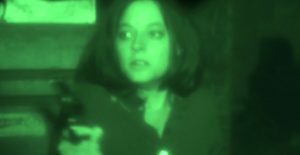
Clarice! He’s watching you! Geez, that’s scary.
As a writer, I find it difficult to write a scary or suspenseful scene. It’s because I (theoretically) know what’s going to happen. Or at least I control the outcome. But I have faith in the writing process. Another Elvis Costello line? “Imagination is a powerful deceiver.” It’s also a powerful informer when it comes to fiction. One of my writing philosophies I think comes from my response to scary movies — less is more. The unseen is what sparks a reader’s imagination.

The shadow can be scarier than what throws the shadow. This image for the cover of No News is Bad News won out over a photo with an actual hunting rifle in it.
The cover art of the first two books in my Bernie O’Dea mystery series have photos that the publisher and I hope evoke the feeling that something bad is going to happen. For the second book, No News is Bad News, we agreed that a photo of a shadow of a man with a gun — a hunter? Or something else? — would trip people’s imaginations more than showing an actual gun or person. My books don’t have classically “scary” scenes, but do have ones I hope are suspenseful enough to give readers a case of the willies. At least the first two. We’ll see what happens in the third, which I’m writing now. In all my scenes, not just the suspenseful ones, I try to let readers’ imaginations take over by not over-describing, but providing enough information and using the right words in the right way to allow readers to form their own pictures. I often say that a reader’s imagination is much more powerful than my words. My words, if done right, are what sparks that imagination and allows it to fill out the scene.
So I guess the scariest thing of all? What’s in our own heads just waiting to come out.
Lea Wait: Definitely what’s in our heads! I have (and have always had) strange, and often scary, nightmares. Have even included a couple in my protagonists’ heads. But, on a practical basis, what am I scared of? Centipedes. Millipedes. Yuck! A few times in my life I’ve had to deal with enormous creatures of these varieties, and it wasn’t fun, even though I was victorious. I’m also scared of mobs. Of large angry dogs. Of heights. Of “amusement center” rides that involve buckling yourself in and then being dropped from heights, careened through the air, or in any other way leaving yourself at the mercy of others.
Which may be my biggest fear. Losing control of myself … or dealing with people who have no self control, or who take their anger out on others.. Fear and anger are close to synonyms in my world. Interesting to think about.
Kate Flora: I blame the cops. Yup. I used to live in such a safe and blissful bubble. But now, having spent the past twelve years writing books about real crimes with cops, I see the world differently. Then there were those classes–the citizen’s police academy and my RAD self-defense class. There’s nothing like tuning up your awareness to infuse the world with danger. Where I might once have crossed a dark parking lot thinking about where I’d just come from, now I see the shadows and check around my car. I walk with my keys woven between my fingers. I jump in quickly and lock the door. I listen for the sounds of someone breathing. When I walk down mostly empty streets, I listen to the footsteps around me. If I can, I use store windows as mirrors to see who is around me. If I am home alone, the creaking of the old house is ominous. There is always someone outside and I am too well aware of the possibilities of someone slipping into the garage as I am turning off the car and gathering my things to go inside. What scares me? The possibilities of a perfectly normal day suddenly turning dangerous. My own imagination.
now, having spent the past twelve years writing books about real crimes with cops, I see the world differently. Then there were those classes–the citizen’s police academy and my RAD self-defense class. There’s nothing like tuning up your awareness to infuse the world with danger. Where I might once have crossed a dark parking lot thinking about where I’d just come from, now I see the shadows and check around my car. I walk with my keys woven between my fingers. I jump in quickly and lock the door. I listen for the sounds of someone breathing. When I walk down mostly empty streets, I listen to the footsteps around me. If I can, I use store windows as mirrors to see who is around me. If I am home alone, the creaking of the old house is ominous. There is always someone outside and I am too well aware of the possibilities of someone slipping into the garage as I am turning off the car and gathering my things to go inside. What scares me? The possibilities of a perfectly normal day suddenly turning dangerous. My own imagination.
Jen Blood. Bats, man. No, not Batman. Bats. I used to be a lot more terrified of them than I am now – when I was younger, the first sight of those fuzzy winged beasts would send me cowering to the floor. One night when I was home alone with my mom, one got in and I recall being on all fours on the floor, a pot on my head (they nest in your hair, you know! And suck your blood. And turn you into face-melting monsters), waving a broom around in a vain effort to shoo it out the open front door. All the while convinced it would call all its face-melting buddies, and the house would be swarmed.
than I am now – when I was younger, the first sight of those fuzzy winged beasts would send me cowering to the floor. One night when I was home alone with my mom, one got in and I recall being on all fours on the floor, a pot on my head (they nest in your hair, you know! And suck your blood. And turn you into face-melting monsters), waving a broom around in a vain effort to shoo it out the open front door. All the while convinced it would call all its face-melting buddies, and the house would be swarmed.
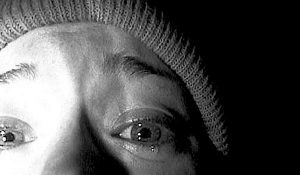 On another occasion, I went to see The Blair Witch Project with a friend in Portland, then returned that night to the empty log cabin I was housesitting in South Thomaston. Not a stellar plan. I woke up in the middle of the night and the power was out. Of course, I was convinced it was the Blair Witch (and yes, I was an adult). I grabbed my contact lenses and my dog Moonshadow, and locked us in the pickup truck while I put my contacts in. Then headed back to my mom’s place in the next town. The only problem was that the power outage spanned a couple of towns, and I just remember driving along 131 and then Route 1 seeing no lights…anywhere. And half laughing at myself, half dreading that it might be true, thinking that the Blair Witch had come and taken out the whole damned Midcoast.
On another occasion, I went to see The Blair Witch Project with a friend in Portland, then returned that night to the empty log cabin I was housesitting in South Thomaston. Not a stellar plan. I woke up in the middle of the night and the power was out. Of course, I was convinced it was the Blair Witch (and yes, I was an adult). I grabbed my contact lenses and my dog Moonshadow, and locked us in the pickup truck while I put my contacts in. Then headed back to my mom’s place in the next town. The only problem was that the power outage spanned a couple of towns, and I just remember driving along 131 and then Route 1 seeing no lights…anywhere. And half laughing at myself, half dreading that it might be true, thinking that the Blair Witch had come and taken out the whole damned Midcoast.
I have lots of stories like that. The night I went to see Pet Semetary with my teen BFF Nicole, I came home and refused to let our big black cat Kammi sleep inside — which I still feel bad about. While housesitting for another woman whose apartment I found sort of terrifying, I took every single painting off the walls and stowed them in the back bedroom until she came home, because it seemed entirely probable that one of those creepy-ass paintings would come to life and murder me in my sleep.
Nowadays, I don’t watch scary movies. I genuinely like bats, thanks to that children’s book Stellaluna. It seems that as I’ve gotten older, those fantasy frights have lost their teeth, and it’s the real stuff that gives me nightmares: death, taxes, the bad things that happen to good people on a daily basis. I still secretly harbor the belief that those old paintings could come to life in the night, though. I’m not ready to give that one up yet.
Bruce Robert Coffin: What scares me? Trying to top the list of fears preceding mine! No, in all seriousness I love a good horror story. Doesn’t matter what type really. Haunted houses, demonic possessions, crazed killers, they all work for me. And in all honesty the format in which it’s told doesn’t matter as long as it’s done well. Novels, movies, even audio can be effective mediums for scaring the hell out of me. I can still remember sitting around the phonograph, huddled together with my friends, at Dunstan School Library listening to the Alfred Hitchcock Mystery LPs.
 I can happily say I’ve never outgrown this love of scaring myself. I still love watching a horror movie at night, alone. Nothing better. Those things don’t scare you? Really? Try watching the Exorcist right before bed tonight without thinking about what might be lying in wait under under yours… Sweet dreams.
I can happily say I’ve never outgrown this love of scaring myself. I still love watching a horror movie at night, alone. Nothing better. Those things don’t scare you? Really? Try watching the Exorcist right before bed tonight without thinking about what might be lying in wait under under yours… Sweet dreams.
October 28, 2016
Weekend Update: October 29-30, 2016
 Next week at Maine Crime Writers, Monday’s post will be our annual Halloween Special. Then there will be posts by Kaitlyn Dunnett/Kathy Lynn Emerson (Tuesday), Maureen Milliken (Wednesday), Barb Ross(Thursday), and Dick Cass (Friday).
Next week at Maine Crime Writers, Monday’s post will be our annual Halloween Special. Then there will be posts by Kaitlyn Dunnett/Kathy Lynn Emerson (Tuesday), Maureen Milliken (Wednesday), Barb Ross(Thursday), and Dick Cass (Friday).
In the news department, here’s what’s happening with some of us who blog regularly at Maine Crime Writers:
Saturday, October 29, and Sunday, October 30, Kathy Lynn Emerson/Kaitlyn Dunnett and Lea Wait will be at the REM Craft Fait, Champion’s Fitness Club, 30 Elm Plaza in Waterville, Maine. Saturday: 10-5, and Sunday, 10-3. Lot of crafts — and books! for your personal and holiday gifting pleasure!
Tuesday, November 1, Lea Wait will be speaking about her Mainely Needlepoint mysteries from 6:30 until 8:00 p.m. at the Dyer Library (371 Main Street) in Saco, Maine. Her books will be available for purchase and signing.
Saturday, November 5, Lea Wait and Barbara Ross will be signing their books from 1 until 3 p.m. at Sherman’s Maine Coast Books (158 Main Street) in Damariscotta, Maine.
An invitation to readers of this blog: Do you have news relating to Maine, Crime, or Writing? We’d love to hear from you. Just comment below to share.
And a reminder: If your library, school, or organization is looking for a speaker, we are often available to talk about the writing process, research, where we get our ideas, and other mysteries of the business. Contact Kate Flora
October 27, 2016
The Joys of NaNoWriMo: You Have Permission to Suck
 Kate Flora: A pretty provocative statement, yes? So I guess I should explain. Yesterday was a cold, rainy, miserable day and I was wrestling with a manuscript that felt like an octopus with a thousand legs. Or arms. Or both. I couldn’t handle it, subdue it, make it behave in any way, and the process was making me grouchy. Then I decided I’d write this blog post, and stared at the blank screen and couldn’t come up with an idea. So I went to my friends on Facebook and asked for help.
Kate Flora: A pretty provocative statement, yes? So I guess I should explain. Yesterday was a cold, rainy, miserable day and I was wrestling with a manuscript that felt like an octopus with a thousand legs. Or arms. Or both. I couldn’t handle it, subdue it, make it behave in any way, and the process was making me grouchy. Then I decided I’d write this blog post, and stared at the blank screen and couldn’t come up with an idea. So I went to my friends on Facebook and asked for help.
Help they did, of course. I now have enough topics to carry me through to the New Year. And the first one was so absolutely timely that I decided to take it up: Tips for NaNoWriMo.
In case there is a soul somewhere on the planet who doesn’t know, NaNoWriMo stands for National Novel Writers Month. Every November, writers sign up to write a 50,000 word novel during the month. Signing up means you’ll probably be put into a group where you can go to meetings if you want that for support, and you will be able to log in to chart your word counts and your progress, and get encouraging e-mails throughout the month.
The internet is absolutely full of advice about how to prep for NaNoWriMo, how to do  NaNoWriMo. So much advice, in short, that you could probably write a novel using the tips as prompts or just aggregate the advice into a short book. Or is that aggravate? Because with so much advice out there, it can be aggravating. Confusing. Overwhelming. And pretty often, those who are offering the advice are quite certain that they are right.
NaNoWriMo. So much advice, in short, that you could probably write a novel using the tips as prompts or just aggregate the advice into a short book. Or is that aggravate? Because with so much advice out there, it can be aggravating. Confusing. Overwhelming. And pretty often, those who are offering the advice are quite certain that they are right.
Should you outline in advance? Have the plot of the work all sketched out? Perhaps have it all storyboarded and taped to your office wall?
The possibilities are endless. And the bottom line, in my opinion, depends entirely on what kind of a writer you are. Or, if this is an early foray into the world of writing, what kind of person you otherwise are. Do you like to do a lot of prepping or do you like sail into an adventure and wing it and see what life brings?
On your behalf, I went out and waded through a bunch of those advicely blogs. And like a retriever, I have brought back the wisdom that speaks to me. You can snap up my thoughts and make them your own, or go atrolling for yourself.
 So here, in no particular order, are the bits of advice that I think are most useful if you are going to have fun with NaNoWriMo.
So here, in no particular order, are the bits of advice that I think are most useful if you are going to have fun with NaNoWriMo.
Embrace a new mindset.
Answer “YES!”
Just start and keep going.
Silence your editor, that picky little voice that tells you you’re doing it wrong. If necessary, draw a picture of your editor and stick pins in it. Be silly if you need to be. This is your adventure. Own it.
Write fearlessly.
Write “TK” for missing facts. Don’t stop to look things up. Don’t obsess over what you can’t remember. You can fix all that later.
Embrace Anne Lamott’s advice: it’s okay to write a shitty first draft. You can edit a draft and make it better. You can’t edit a blank page.
Embrace the word discipline.
For once, elevate quantity above quality. Don’t edit. Just keep going. Do keep track of your word count. It’s part of the game.
Keep telling yourself: The Perfect is the Enemy of the Good
Remember that you’re not trying to win, you’re trying to be
Don’t let the risk of obsession scare you off
You have permission to suck. Who cares. You may make amazing discoveries in the process.
Unplug. No phone calls. No checking e-mail. No selfies.
Exception: You can make yourself, or your story, a playlist. It can become part of the ritual.
Write in the same place if you can, because the ritual of place can become part of the ritual of writing.
Finally, a bit of heretical advice. The rules say you’re supposed to write something new. But you are writing for you, not for them. If you’ve got the half-finished story in the drawer you’ve never had time to get back to…you are allowed to take it out and finish it. (Don’t tell them I said this.)
November. Your month. You’re the writer. The only thing you have to do is honor your desire to write by giving it the time it deserves. And see where story takes you.
A lot of advice is about prepping…but hey, you’re out of time, and about not bothering agents or editors with your unedited glop at the end. But you wouldn’t do that anyway.
Here are a couple of blogs I used to compile the above. And below, a snippet from a book I wrote during NaNoWriMo one year.
http://terribleminds.com/ramble/2011/10/04/25-things-you-should-know-about-nanowrimo/
Runaway
Air-horn blaring, the eighteen-wheeler came barreling at her out of the dark. Callie yanked the wheel, adrenaline surging, as she rocked back into her lane. The Jeep fishtailed wildly as she fought for control. Horn still blaring, the truck rushed past and disappeared into the night. Her breath quick and shallow, nerve-trees tingling, she clung to the wheel. Adrenaline carried her on its sharp, acid flow for another mile before it faded, leaving her drained and alone in a night as dark as Galen’s heart. Then, arms trembling, she abandoned her determined press forward, pulled onto the unpaved shoulder and parked, numb from exhaustion. All she could feel was the biting pressure of her nails–hard, sharp slices of sensation–against the palm of her hands. She had no idea where she was or where she was going. Her only plan had been to keep moving, putting time and distance between herself and the mess her life had become.
How long had she been driving? Ten hours? Twelve? Drive too long without a break and your eyes start playing tricks. You see things that aren’t there, like patches of blood spreading across the road, and you don’t see things that are, like eighteen-wheelers coming at you like Leviathan from the depths. She should get out. Stretch. Walk around in the cold night air and wake herself up. Her body resisted the urging of her brain, stayed inert in the seat.
The night was pure black. No streetlights. No house lights. Wind battered the car, rattling the wipers, panting to get at her as it tore away dried leaves that had sheltered in the depression below the windshield. She watched, eyes at half-mast, as they rustled across the glass like the small animals. It was cold out there. Before she shut off the engine, she’d seen the outside temperature was 38.
She’d left Pennsylvania running on an instinct born of desperation. Get out of town, away from the suspicious looks, the comments, the humiliation. Out of her ransacked apartment and her shredded life. Several hundred miles later, she’d run out of gas—spiritual gas, not petroleum—here on this lonely roadside somewhere in Vermont.
The whole ugly mess had exploded on her a few weeks ago, when she’d woken one morning feeling drugged and groggy, not to her fiancé Galen’s head beside her but to a barren apartment, a stripped office, emptied bank accounts, and note, pinned to his pillowcase by a chip clip that said, “Thanks for everything.”
Double Gut Punch
John Clark looking at a couple recent young adult titles that exemplify how strongly the genre is addressing changes in the way teens look at the world, each other and their peers. If you’re my age or thereabouts, you probably cut your teeth on Nancy Drew or the Hardy Boys. Think back for a moment, did Nancy even know what a tampon was? Were Joe and Frank ever cautioned about STDs? Bet not.
While most of the challenges today’s teens face have been around forever, acceptance, discussion and awareness of/about them was ignored. The world is a scary place these days, made more so by instantaneous communication. Less than five minutes after a horrific shooting, plane crash or bomb going off, details (sadly often inaccurate or graphic) are all over social media. This change is here to stay, but I’m a firm believer in how good fiction can be helpful in not only opening eyes about issues, but in reassuring teens that whatever differences they may have on a physical or emotional basis, they’re neither unique nor alone.
The first book was brought to my attention by my friend Brian Katcher on his Facebook page a week ago. Brian has written some terrific YA books, some funny, some very emotional (his Almost Perfect is among my ten best YA books read of all time). He hooked me with his post and I ordered it on the spot. Look Past, (Running Press Teens, 2016. ISBN: 9780762459216) is written by Eric Devine, a high school English teacher. Avery, the protagonist, is a transgender boy who came out several years ago. His family is very supportive including his uncle Tom, a member of the local police force. School is still sometimes a war zone, particularly because of homophobia, lack of understanding and a lot of kids from religious fundamentalist families.
When Avery was younger, he was very close to Mary Mathison, daughter of the local fire and brimstone minister. She loved Avery, despite her background and her feelings were reciprocated. When they shared a first kiss while swimming in a stream behind her house, they were caught by Reverend Mathison. Mary was punished and even though it was clear to Avery that she still cared for him, the connection was essentially severed. Fast forward to junior year. Avery has a new girlfriend, Beth, and a best friend, Charlie. He and Charlie share a love of forensics and Avery knows that Charlie has never gotten over the loss of his mom. Neither has Charlie’s dad, who alternates between lashing out at his son and withdrawing.
The book opens with Avery, Beth and Charlie participating in a ground search for Mary who vanished a week ago. Avery expects the worst. When a hunter, involved in the search, follows a hunch and veers away from his assigned area, he finds her. Mary’s not only dead, but pieces are missing and a bible passage written on paper has been inserted in her mouth.
Thus begins a gritty, profane journey for all concerned, but mostly for Avery. Not only is he tormented by text messages from the killer, but he also finds himself reliving every memory he had with Mary, wondering whether he could have done something to change the outcome.
While a mystery, this is also one hell of a good look at how life is for a transgender teen. You get to see Avery at his best and his worst as well as understand what transitioning is like, not only from a physical, but an emotional standpoint. In fact, I was so focused on the dynamics between Avery and the other main characters that the solution snuck up on me. This is a definite book for Edgar consideration next year.
The other book is the first in a trilogy and I’m eagerly awaiting arrival of the other two. Courage In Patience by Beth Fehlbaum (Steady on Books; Revised First ed. edition (March 29, 2016): ISBN: 9780997387100). Ashley Asher is terrified more often than not and has good reason to feel that way. Her dad has never really been in the picture, her mom has crappy taste in men and her stepfather, Charlie, is a leering monster. He’s been after her since she was nine, knocking holes in walls so he can spy on her in the bathroom and her bedroom. Inappropriate touching is part of her life, but now Charlie has ramped things up to a really scary level. Ashley’s mother refuses to believe anything she tells her, making her living situation even worse.
When Charlie rapes her, she’s bleeding badly and escapes to her friend’s house. Lisa has started to get irritated with Ashley because their friendship seems one-sided. Ashley stays at her home a lot, but never invites Lisa to her place. When She sees the incriminating note written by Ashley’s mom, Lisa begins to understand how bad things are for her friend. They end up seeking help from a trusted teacher who gets Ashley to the hospital and involves both cops and child welfare. Unfortunately, Charlie and Mom’s lies trump Ashley’s story. Fortunately, the teacher, Mrs. Chapman, takes Ashley’s side and forces child services to locate her real father who lives a couple hours away in the small town of Patience, Texas.
What Ashley discovers is that Dad freaked out when he became a father and as a result didn’t handle things well. Her mother never told her much about him, only that he was bad and untrustworthy. In the interim, He’s grown up, dealt with drinking and anger issues and remarried. When he learns what has happened to Ashley, he’s there as soon as possible and promises her that he’ll do everything possible to make up for his absence and what happened to her courtesy of Charlie.
Ashley’s reluctant to trust, but Bev, her stepmom is a gem. She’s an English teacher who just found out she has to teach a summer lit course. Ashley, eager to find some normalcy, asks to enroll and a bonding between them begins. Likewise with her younger stepbrother, Ben, starts out not knowing how to deal with what happened to her, but soon becomes a real sibling defender.
This is a book not afraid to cover graphic details about abuse, the aftereffects and the insanity of a parent so desperate for male attention that she would sacrifice a child to get it. As readers follow Ashley’s slow and painful steps out of fear and mistrust, they meet some wonderful (and a few not so wonderful) people) The kids Ashley meets in the summer lit class are diverse and cover the spectrum from slacker, to eager to be perfect, to having issues close to what Ashley faces. Bev does a great job of forcing everyone in the class to engage by using Chris Crutcher’s Ironman as the topic book. Her strategy is not without repercussions, but read the book to find out about them as well as how Ashley’s journey unfolds. It’s a great book about the trauma of sexual and emotional abuse, perfect for teens who have been there or who have friends that have.
October 25, 2016
Mystery Loves Company
Dorothy Cannell: A few weeks ago a friend from England came to visit and gave me, 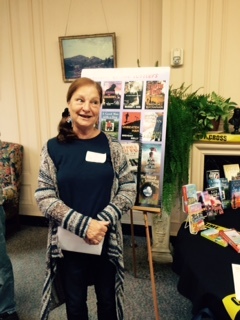 perhaps in hope of breakfast in bed, a page from The Times, Monday October 3, 2016 written by David Sanderson under the headline “And Then There were … Plenty.” Set below is the opener:
perhaps in hope of breakfast in bed, a page from The Times, Monday October 3, 2016 written by David Sanderson under the headline “And Then There were … Plenty.” Set below is the opener:
“The best known novels of Agatha Christie are being revived for new film and TV audiences writes David Sanderson…. For once the culprit is obvious. It was Agatha Christie in her study with an astonishing output of drama and intrigue.
“The author’s murder mysteries are set for a multi-million pound, 21st century makeover after her estate signed a string of film and television deals. The names in the frame are a who’s who of Hollywood including Sir Kenneth Branagh, Ben Affleck, Dame Judi Dench and Johny Depp.
“There are at least four feature films in the pipeline, plus a seven-programme adaptation deal with BBC, and another Hercule Poirot continuation novel.”
In my thoroughly biased opinion as an enthusiast of Christie’s work I think this news calls for a National Day (if not year) of The Mystery. What mainstream writer of her era is in her league when it comes to garnering fans not born until yeaCrs after her death in 1976? To have escaped becoming dated, as has been the fate of many from her era, is an inspiration to today’s mystery writers.
A quote from Hilary Strong, chief executive of Agatha Christie Limited, caught my attention:
“There is a darkness to the work that has not necessarily been interpreted by the film makers before…And Then There Were None is actually the grandmother of horror.”…. She was a social historian, and there is the wonderful sense of humour. Sir Kenneth [Branagh], who is directing and starring in a new film adaptation of Murder on the Orient Express, agreed that there was an edge to Christie’s work. He described the novel as ‘mysterious, compelling and upsetting,’ adding that he was honoured to be bringing ‘these dark materials to life for a new audience.’’’
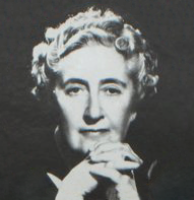 I have frequently been involved in writers’ chit-chat as to whether Cristie’s mysteries can be labeled cozies. My take on The Body in the Library has long been cozy title to fit setting and grim plot, and that’s what I took from this article – that she can’t be slotted into any niche. She was the whole package – unique until some other writer can work out how she wove her magic.
I have frequently been involved in writers’ chit-chat as to whether Cristie’s mysteries can be labeled cozies. My take on The Body in the Library has long been cozy title to fit setting and grim plot, and that’s what I took from this article – that she can’t be slotted into any niche. She was the whole package – unique until some other writer can work out how she wove her magic.
Upcoming Feature Films: Murder on the Orient express; Witness for the Prosecution, And Then Were None, Crooked House.
BBC TV Adaptions: Ordeal by Innocence, Death Comes As The End, The ABC Murders.
On a personal note, huge thanks to PBS for the many wonderful British programs they provide. Currently loving Poldark and The Dr. Blake Mysteries on Thursday nights.
All best wishes, Dorothy
October 24, 2016
Character Building
Vaughn Hardacker here: One of the things that will turn me off on a book is Tom Swift style characters, you know the hero who excels at everything they have ever done. You know The Great Leslie Gallant character of the Warner Brothers 1965 movie THE GREAT RACE. The movie is one of my all time favorites and it is great satire. However the characters are all shallow. Tony Curtis as Great Leslie is the protagonist and Jack Lemmon as Professor Fate Leslie’s nemesis and antagonist. Are satirical illustrations of the heroes and villains of silent films. The problem is they are one dimensional (albeit I believe intentionally so).
As writers we must never forget that people are not one or even two dimensional, they are multi-faceted. They have hopes and fears, hates, likes and failures. Yet, when we think
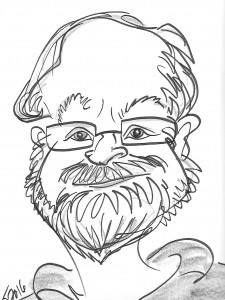
Vaughn
of their personalities, we tend to key on one or two dominant traits. We describe someone we know to another person as, “He’s the pushy one.” Or “She’s so sweet, but a bit ditsy.” It’s what, in our minds, makes these people individuals to us.
So, too, the characters we write are multi-faceted. When we write them as such, they all blend one into another, with no personality distinctions. Their physical attributes are different, but you could probably swap around and notice little difference. The most recent rejection letter says, “Your characters are cookie cutter.” Of course, in your mind, you (as the writer) see all these “people” as distinct.
Remember the way we describe people? Define your characters the same way. Give your hero two or three traits. That’s all. Give him two good and one bad (or two bad and one good, if your character is evil). Lesser characters get fewer traits.
I’m currently working on a novel where my protagonist is moral (good) and long-suffering in patience (good), but when he’s had enough, he’s brutal (bad). My antagonist, by necessity is almost the opposite: arrogant (bad) and insecure (bad), which makes him a bully.
I try to make all of my writing character driven (we sort of have to, after all virtually every plot today is derived from Shakespeare), so even though there’s a “bad guy” in my Bouchard and Houston novels one of my readers’ favorite characters is an anti-hero. Jimmy O could easily be the antagonist. However, as interesting as many of my readers have found him, he’s a supporting character (they get only two traits, in Jimmy O’s case he can be brutal and violent while on the other hand uses that trait to help people less fortunate as he). He is as a member of one of my writing groups said: a gangster with morals.
It’s important to remember that sometimes stories change as we write them. A minor character (Jimmy O) could suddenly become important and move into a supporting character role. If this happens, give that character one more trait. But only one; you don’t want to interfere with the importance of the primary characters.
Likewise, a supporting character may fall back to supporting status. In that case, focus on just one of his chosen traits.
The most important thing to remember is what is your character’s role in the story…does his or her presence move the story forward? If you don’t know that, then your characters will have too many traits and once again, they’ll become cookie cutter people with different roles.
My First Bouchercon
Happy October, all! Bruce Robert Coffin here, sharing my latest travel news.
Well it’s over, my very first Bouchercon Mystery Writer’s conference. And what a conference it was! Over two thousand like minded individuals, comprised of writers, agents, publishers, and fans, all gathered together in celebration of mystery and mayhem in The Big Easy.
It was memorable for me for a number of reasons, not the least of which was that my debut novel, Among the Shadows, was released the day before the start of the conference. First novel, first Bouchercon, and first time to New Orleans. And if that wasn’t enough, I got to chat with Harlan Coban, C.J. Box, Otto Penzler, Reed Farrell Coleman, and Lee Child. That’s right you heard me, Lee Freaking Child. What where they like? They were awesome. Approachable, pleasant, and extremely down to earth. What does one talk about with authors of such magnitude? Why writing, of course. I saw Michael Connelly speaking with someone in the hallway my very first afternoon. I resisted the urge to corner him and try and have my picture taken with him. Slyly, I figured the opportunity would present itself again during the four days I was at the conference. It didn’t. I did manage to finagle a great picture of Harlan and I standing on either side of a poster of my book cover. Yup. Just me and Harlan Coben looking like badasses, endorsing my novel Among the Shadows. Well, okay, I’m endorsing it while he’s just being a good sport.
As I opined to several of my author friends, this is such a weird business. Several times during the conference I was seated at the head table beside a row of other novelists as we signed autographs for fans. Pretty cool, right? Damn right it was. People, actual readers, coming up to talk to ME and ask for an autograph. It was surreal. But the real strange part came when hours later I found myself standing in line on the other side of the table waiting for Lee’s autograph. When I realized that he was signing, I ran back to the book dealer who’d had multiple copies of various Jack Reacher Books. To my horror, I learned that he’d sold every last one. What? OMG! I scurried to the other vendors, but they were all out. Finally, I located one lone hardcover copy of Personal. “It’s already signed,” the dealer told me. Sure enough, I opened it to find Lee’s signature on the title page. “I’ll take it,” I said. It was autographed, but not personalized. As I chatted with Mr. Child, I let it slip that my first novel had just been released mere days ago. He smiled graciously and said, “congratulations.” As long as I live, I’ll never forget that moment.
There were so many cool moments. I attended the new author breakfast, where I and about fifteen fellow debutants had to stand up in front of a packed auditorium and talk for three minutes about ourselves and our books. I intentionally sat with a couple of my New England crime writing pals, figuring there was safety in numbers. I choked down some fruit and scrambled eggs, took a few swigs of coffee and waited for the gladiator games to commence. Intuitively, my buddy Brian Thiem sensed my angst, having been through this very same initiation last year. He leaned over to me and said, “are you nervous?”
“Uh, I am now,” I said.
“You’ll do fine.”
He was right. At least, I think he was. He gave me the thumbs up when I’d finished speaking. In all honesty, I don’t remember what I said, but the other members of the breakfast club gave an enthusiastic applause, as they did to each of the newbies.
Another bud of mine, Chris Holm, was up for one of the most prestigious writing awards there is, the Anthony. And not just any old Anthony, this one was for best novel, for his thriller The Killing Kind. And, in spite of the lengthy and impressive resume of the other nominees, HE WON! Congratulations, Chris! I suggested that he change his name to Anthony Holm. He liked the idea, implying that it would be okay if I called him Tony, but only when we were alone.
And what can I say about New Orleans? It was awesome. A parade every hour, or so it seemed. Hot, humid, even crazy at times, but mostly just awesome. I ate gumbo, tried beignets, had alligator sausage, shrimp, hurricanes, and more gumbo. Everyone I met was pleasant. The locals appeared to love chatting us up. They all had stories about Katrina and her aftermath. Many of them had to move away for several years after the storm. But like us hearty New Englanders, they returned, vowing to work hard and restore their former lives. Inspirational people, these.
On Sunday morning, the last day of the conference, I took part in my first Bouchercon panel, titled The Heat is On. The topic of the panel, moderated by the delightful and charming Dana Cameron, was the challenges series writers face. The panel itself consisted of moi, Quai Quartey, Susan Shea, and Mary Anna Evans. Being a Sunday morning, I figured the room would be empty as attendees packed up their belongings and headed to the airport. Boy was I wrong. We played to a packed house. The panel went so smoothly and each of us played off the other so well, the hour seemed to pass by in the span of ten minutes. And the crowd ate it up. It was a good note to finish on. Left me wanting more.
So, as I write this, 12,000 feet in the air and headed back toward Boston, I’m already dreaming about next year’s conference, which will be held in Toronto. Am I excited? What do you think?
October 21, 2016
Weekend Update: October 22-23, 2016
 Next week at Maine Crime Writers there will be posts by Bruce Coffin (Monday), Vaughn Hardacker (Tuesday), Dorothy Cannell (Wednesday), John Clark (Thursday), and Kate Flora (Friday).
Next week at Maine Crime Writers there will be posts by Bruce Coffin (Monday), Vaughn Hardacker (Tuesday), Dorothy Cannell (Wednesday), John Clark (Thursday), and Kate Flora (Friday).
In the news department, here’s what’s happening with some of us who blog regularly at Maine Crime Writers:
Lea Wait: Excited that Dangling By a Thread, the fourth in my Mainely Needlepooint series, will ship early this week! Every town has its eccentrics (maybe especially in Maine) and in Haven Harbor Jesse, who lives alone on an isolated island, is called The Solitary. 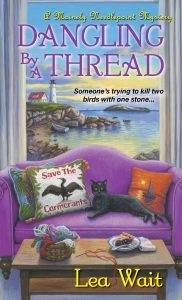 But Jesse has a reason to be there … and when his world is threatened, he has the Mainely Needlepointers for friends.
But Jesse has a reason to be there … and when his world is threatened, he has the Mainely Needlepointers for friends.
And Wednesday evening, October 26, Lea, Kate Flora, and Barbara Ross will be speaking at “Death and Desserts” at the South Berwick Public Library in Maine. Talk, books to hear about and purchase … and desserts. How could an evening be any better! Hope to see you there.
Then, Saturday and Sunday, October 29 and 30, Kathy Lynn Emerson/Kaitlyn Dunnett/Kate Emerson and Lea Wait will be at the REM (Revitalizing the Energy) Craft Fair at Champion’s Fitness Club, 30 Elm Plaza (exit 130 off I-95) in Waterville, Maine, along with dozens of Christmas crafters. What a place to shop for Christmas and support local artisans! Hours: Saturday from 10 a.m. until 5 p.m.; Sunday, 10 a.m. until 3 p.m.
Kate Flora: Recently, the wonderful Dale T. Phillips did a long and interesting interview with my on his blog. If you’re curious, you can check it out here, and perhaps learn some of my deep, dark secrets: http://daletphillips.blogspot.com/2016/10/interview-with-kate-flora.html
An invitation to readers of this blog: Do you have news relating to Maine, Crime, or Writing? We’d love to hear from you. Just comment below to share.
And a reminder: If your library, school, or organization is looking for a speaker, we are often available to talk about the writing process, research, where we get our ideas, and other mysteries of the business. Contact Kate Flora
October 20, 2016
How to Launch a Book on a Budget
Whether you’re an author with a traditional publishing company or you’ve elected to go it alone, I don’t think it’s really a surprise that budgets are tight when it comes to promotions and marketing these days. Unless you are one of the chosen few star players for a traditional imprint, many of the costs for launching your book may fall on your shoulders. And, of course, if you’re an indie working on a shoestring budget (and who among us isn’t?), then everything is pretty much on you. Since I’ve been working as an indie author for almost five years now and am preparing to launch a new series, I thought now would be a good time to share my own launch process for this latest novel.
 First, a little about what I’m doing. My new Flint K-9 Search and Rescue series features characters from my bestselling Erin Solomon series – so I’m essentially doing a spinoff with some of my strongest characters. The first book in the series, The Darkest Thread, is out officially on October 25.
First, a little about what I’m doing. My new Flint K-9 Search and Rescue series features characters from my bestselling Erin Solomon series – so I’m essentially doing a spinoff with some of my strongest characters. The first book in the series, The Darkest Thread, is out officially on October 25.
THE ADVANCE READER TEAM
In today’s digital-savvy world, pretty much everyone you talk to in publishing is all about the almighty mailing list. I have a mailing list of about 3,000 subscribers at this point. In my August newsletter to those subscribers, I put out a general call asking for readers who would be willing to review the new book if I provided them with an advance review copy (or ARC, as it’s known in the business). Because authors’ careers are made or broken based on the number of reviews they have on Amazon and Goodreads these days, the advance reader team is a critical component in the launch process.
I ended up with a team of 75, with which I’m very happy. I sent out personal messages to everyone who responded as their emails came in, and then sent out an official welcome on September 15 through Mailchimp. I had 75 promotional codes for my audiobooks through ACX (the Amazon company I go through to distribute my Erin Solomon audiobooks), so was able to let everyone on the mailing list choose one of the first three audiobooks in my series, as a special perk for being on the advance reader team.
On October 6, my ARC was ready to send to the advance reading team. I use BookFunnel as the easiest way to distribute free books, as readers can choose the format that works best for them depending on the ereader they use. In the email I sent on October 6, I provided a timeline for when I would like the book review up; reiterated the fact that I was not looking for solely positive reviews, but rather am looking for fair, honest reviews about the readers’ perceptions of the novel; and asked each reviewer to please include a disclaimer at the beginning of the review per Amazon guidelines, in order to make sure we weren’t violating their rules. That process got a little muddy as Amazon has just changed those guidelines, but ultimately it was determined that the best disclaimer to use at this time is: DISCLOSURE: I received an ARC of this novel at no cost to the author.
THE LAUNCH SEQUENCE
 While the advance reader team was at work, I was busy prepping everything else. I posted the book for print pre-order on Amazon, posted the details of the book on Goodreads, and got digital pre-orders up on Barnes & Noble and Kobo, as well as preparing the book for release on Amazon and Draft2Digital (which distributes my books to the iStore for me, since I don’t have a Mac). Though you can do digital pre-orders on Amazon, I unfortunately got turned around with the mechanism at my last book launch, so it’s not actually available to me for the next year. Because sometimes Amazon is punitive; let that be a lesson to you.
While the advance reader team was at work, I was busy prepping everything else. I posted the book for print pre-order on Amazon, posted the details of the book on Goodreads, and got digital pre-orders up on Barnes & Noble and Kobo, as well as preparing the book for release on Amazon and Draft2Digital (which distributes my books to the iStore for me, since I don’t have a Mac). Though you can do digital pre-orders on Amazon, I unfortunately got turned around with the mechanism at my last book launch, so it’s not actually available to me for the next year. Because sometimes Amazon is punitive; let that be a lesson to you.
On October 10th, I announced a dog photo contest to be held the day of the book launch, on October 25th. Since the book is about dogs, and I love dogs, and election season is horrible and all I really want to look at are happy, smiling dog faces, this seemed a good idea.  I didn’t invest extra money in promoting the contest far and wide, and instead just relied on my social network on Facebook, Twitter, and through my mailing list. About fifty people submitted photos, which I think is a great turnout while still being manageable for me. I posted all of those photos in a Facebook photo album, and every ‘like’ each photo receives counts as a vote for that dog. The grand prizes for the contest are two $25 Amazon gift cards and a Kindle Paper White, but everyone who enters will win something. I’ll be taking submissions for the photo contest until 5pm EST on Friday, Oct 22nd, and judging will take place during an online Facebook Launch Party I’m hosting between 2 and 9 p.m. on Tuesday, October 25th.
I didn’t invest extra money in promoting the contest far and wide, and instead just relied on my social network on Facebook, Twitter, and through my mailing list. About fifty people submitted photos, which I think is a great turnout while still being manageable for me. I posted all of those photos in a Facebook photo album, and every ‘like’ each photo receives counts as a vote for that dog. The grand prizes for the contest are two $25 Amazon gift cards and a Kindle Paper White, but everyone who enters will win something. I’ll be taking submissions for the photo contest until 5pm EST on Friday, Oct 22nd, and judging will take place during an online Facebook Launch Party I’m hosting between 2 and 9 p.m. on Tuesday, October 25th.
During the launch party, I’ll be giving out prizes, taking questions about dog training (I’m a certified trainer myself and have my trainer/mentor on standby to lend a hand with the heavy lifting when I’m uncertain about anything), sharing excerpts and extras from the novel, and drinking lots of wine. Because that’s what you do when you’re online for seven hours pimping your work.
It’s free to host an event on Facebook, and posting the album of dog photos for the contest is likewise free. You can opt to ‘boost’ the post and tailor your target audience accordingly if you’re comfortable with Facebook ads and have a budget to work with – depending on your prowess, I’ve heard this can be quite effective. That depends largely on how extensive your existing social media audience is, and just how many people you’re trying to reach. Realistically, I didn’t think I could handle much more than 50 entries in the photo contest anyway, so I’m very happy with my results.
As far as the sequence of everything else goes, I’ll be doing a ‘soft launch’ of The Darkest Thread over the weekend in order to work out any kinks and allow advance readers the opportunity to submit their reviews before the wide release on October 25th. I’m also running a cross promotion of my 5-book Erin Solomon box set (digital only), selling that set for an unprecedented (and possibly insane) $.99 from October 24th to the 30th. I have a BookBub deal to promote that on the 29th, and am doing other paid advertising with Booksends, Books Butterfly, and JustKindleBooks.
WHAT DOES ALL OF THIS DO?
Most folks agree these days that—again, unless you’re one of the chosen few sitting in the winner’s circle with the Big 5 traditional publishers—the launch of a book is rarely going to set the world on fire. Rather, it’s a slow and steady race over time. You still want to make some impact up front, however, and the better positioning you can give your novel from the very start, the better chance that you’ll pick up momentum sooner rather than later. Personally, I just crunched the numbers and have $2,759.04 invested in this book, including the promotion for the Erin Solomon box set, cover design and editing for The Darkest Thread, SWAG for online and in-person giveaways, and print book stock.
I’m selling the book online at just $3.99 for the first week, and then will increase the price to its regular $5.99 on October 31st. That means I have to sell roughly 988 digital copies or around 310 print copies, in order to break even. Which is doable, but certainly requires some work on my part. My hope is to do that by October 31st so that anything I earn going forward puts me back in the black. Still, all of this is a scary prospect. I’ve now launched seven books, most of them with pretty good success, but I still find myself laying awake at night crunching numbers and praying to the publishing gods that things will go off without a hitch and my book will earn good reviews and equally good sales numbers.
Now, I know what you’re thinking… “But, Jen, I don’t actually have 2700+ dollars to spend on a book launch.” I hear you. So, here’s how I prioritize when I’m working with a smaller budget:
Book Design & Prep: The key to your success is having a great book to begin with. So, your top priorities in terms of expense if you’re an independent author are cover design and editing. If you’re a traditionally published author, those are happily two components you don’t have to fret over, so pat yourself on the back for snagging a traditional publisher who will foot those costs for you.
SWAG: This doesn’t need to be a huge expense. You can get bookmarks through NextDayFlyers (my personal favorites) or VistaPrint for $35 to $50, depending on how elaborate you get with the design and how many you order. Another fun bit of SWAG I’ve done in the past is to buy candy wrappers with my book cover and info on them. I get them through the Candy Wrapper Store; the cost is reasonable, and you just wrap them yourself around Hershey’s Miniatures and have a tasty customized tidbit to offer at signings and readings.
 If you want higher-end SWAG you can always opt for pens, hats, mugs, T-shirts, etc., but just think about how you’re going to use that SWAG, where you’re giving it out, and be realistic about just how likely it is that giving it out will actually lead to sales.
If you want higher-end SWAG you can always opt for pens, hats, mugs, T-shirts, etc., but just think about how you’re going to use that SWAG, where you’re giving it out, and be realistic about just how likely it is that giving it out will actually lead to sales.Advertising and promotion: If you’re not launching with an advance reader team or some good reviews through more conventional sources like Kirkus or Booklist, my recommendation is to not spend a lot (or anything) on paid advertising when you’re first launching your book. Wait until you’ve generated some reviews and some momentum, typically at least two to three months in, before you start looking around for advertising venues. Instead of paying for advertising and promotion early on, focus on things like hosting a Facebook launch party or doing something creative like holding a photo contest or something else that’s interactive enough to draw readers in. Author Rachel Abbott just started doing writing contests with her readers, which I think is a fabulous idea. Be creative, and have fun.
So, that’s my advice on the almighty book launch. If you’re an author, what have you found that works well for you when launching a book? And if you’re a reader, do you pay attention to book launches, or are you more likely to pick up a book after it’s generated some buzz?
Jen Blood is author of the bestselling Erin Solomon Mysteries, and the newly released Flint K-9 Search and Rescue Mystery The Darkest Thread. To learn more, visit www.jenblood.com.
Lea Wait's Blog
- Lea Wait's profile
- 509 followers


